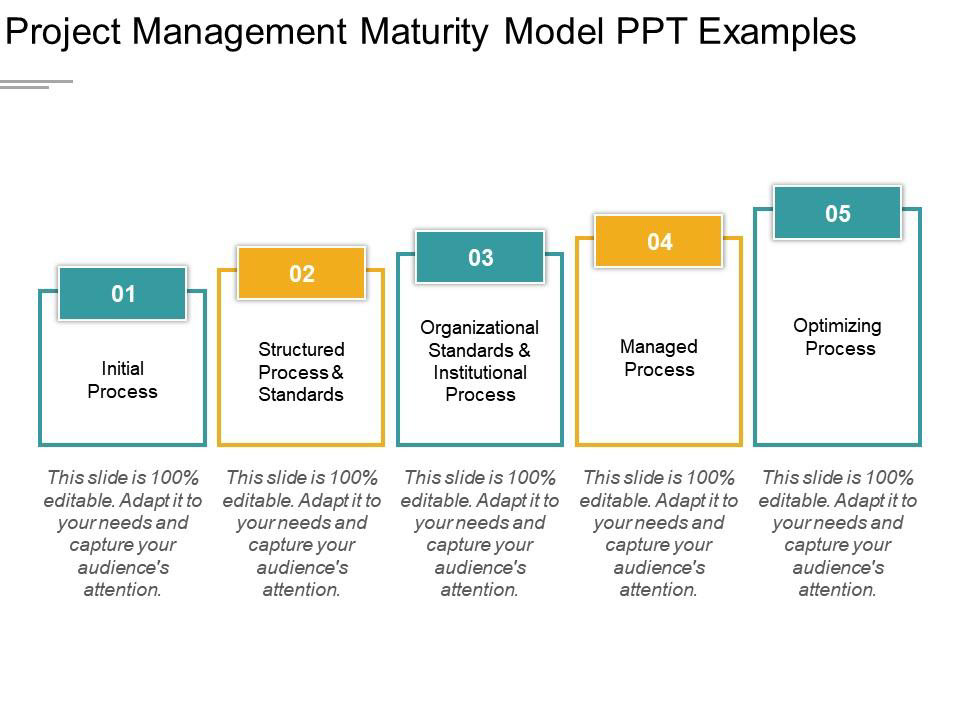Introduction
In today's rapidly evolving business landscape, organizations are constantly seeking ways to enhance their operational efficiency, optimize resource allocation, and improve overall business performance. One effective approach to achieving these goals is by conducting a Business Process Maturity Assessment (BPMA).
This article will delve into the intricacies of a Business Process Maturity Assessment Template and explain how it can drive organizational success.
Related Article: Business Strategy Planning Template
Understanding Business Process Maturity
Business Process Maturity refers to the level of development and effectiveness of an organization's processes. It reflects the organization's ability to consistently deliver desired outcomes while managing risks and adapting to changing business requirements. A BPMA evaluates process maturity across various dimensions, such as process documentation, standardization, automation, performance measurement, and continuous improvement.
Benefits of Conducting a Business Process Maturity Assessment
Enhanced Operational Efficiency
By assessing process maturity, organizations can identify inefficiencies, redundancies, and bottlenecks within their operations. This assessment enables them to streamline processes, eliminate waste, and enhance overall efficiency. Improved operational efficiency leads to cost reduction, increased productivity, and faster delivery of products or services.
Optimized Resource Allocation
A BPMA helps organizations identify resource gaps and mismatches, enabling them to allocate their resources more effectively. By aligning resources with critical processes, organizations can optimize workforce utilization, reduce unnecessary expenditures, and improve resource allocation decisions.
Improved Risk Management
Business Process Maturity Assessment enables organizations to identify process-related risks and vulnerabilities. By evaluating process controls, organizations can implement appropriate risk mitigation strategies and ensure compliance with regulatory requirements. This proactive approach to risk management minimizes the potential for errors, fraud, and non-compliance.
Enhanced Customer Satisfaction
A mature business process ensures consistency in product/service quality, delivery timelines, and customer experience. By assessing process maturity, organizations can identify areas for improvement, implement customer-centric process enhancements, and ultimately enhance customer satisfaction levels.
Support for Business Transformation Initiatives
Conducting a BPMA provides valuable insights into an organization's current state and its readiness for future transformations. The assessment highlights areas that require attention during process reengineering or technology implementation initiatives. By leveraging process maturity assessment results, organizations can effectively plan and execute their business transformation journeys.
Components of a Business Process Maturity Assessment Template
A Business Process Maturity Assessment Template typically consists of the following components:
Process Documentation and Standardization
This component assesses the existence and quality of process documentation across the organization. It examines the clarity, completeness, and accessibility of process documentation, including process maps, standard operating procedures, and work instructions.
Process Performance Measurement
This component evaluates the organization's ability to measure process performance effectively. It examines the presence of key performance indicators (KPIs), their alignment with organizational objectives, and the availability of measurement systems or tools.
Process Automation and Technology Enablement
This component assesses the extent to which processes are automated and enabled by technology. It evaluates the utilization of process automation tools, workflow management systems, and integration with enterprise systems to enhance efficiency and reduce manual effort.
Process Governance and Compliance
This component evaluates the organization's process governance framework and its adherence to regulatory requirements and internal policies. It examines the presence of process controls, segregation of duties, and compliance with relevant standards or regulations.
Process Improvement and Innovation
This component assesses the organization's approach to continuous process improvement and innovation. It evaluates the existence of a formal improvement methodology, the utilization of improvement techniques (e.g., Lean, Six Sigma), and the encouragement of employee-driven process innovation.
Implementing the Business Process Maturity Assessment Template
To effectively implement the Business Process Maturity Assessment Template, organizations should follow these steps:
Define Assessment Objectives and Scope
Clearly define the objectives of the assessment and identify the scope of the assessment, such as specific departments, processes, or functional areas to be evaluated.
Gather Process Information
Collect relevant process documentation, performance data, and other supporting materials to gain a comprehensive understanding of the processes under evaluation.
Conduct Process Assessments
Use the Business Process Maturity Assessment Template to evaluate each process based on the defined assessment components. Assign ratings or scores to each component based on predefined criteria.
Analyze Assessment Results
Analyze the assessment results to identify strengths, weaknesses, and improvement opportunities. Prioritize areas for improvement based on their impact on organizational objectives and feasibility of implementation.
Develop an Action Plan
Develop a detailed action plan that outlines the improvement initiatives, responsible parties, timelines, and resource requirements. Ensure alignment with organizational strategies and goals.
Implement Improvements
Execute the identified improvement initiatives, ensuring proper change management practices, stakeholder engagement, and monitoring of progress. Monitor the impact of implemented improvements on process performance.
Periodic Reassessment
Periodically reassess process maturity using the Business Process Maturity Assessment Template to track progress, identify emerging risks, and continuously improve processes.
Conclusion
A Business Process Maturity Assessment Template provides a structured and systematic approach for evaluating and improving organizational processes. By assessing process maturity, organizations can identify areas for enhancement, prioritize improvement initiatives, and drive sustainable business growth.
By leveraging the benefits of a mature business process, organizations can adapt to changing market dynamics, deliver superior customer value, and gain a competitive advantage in today's dynamic business landscape.
You can download more templates from EzowoStore

